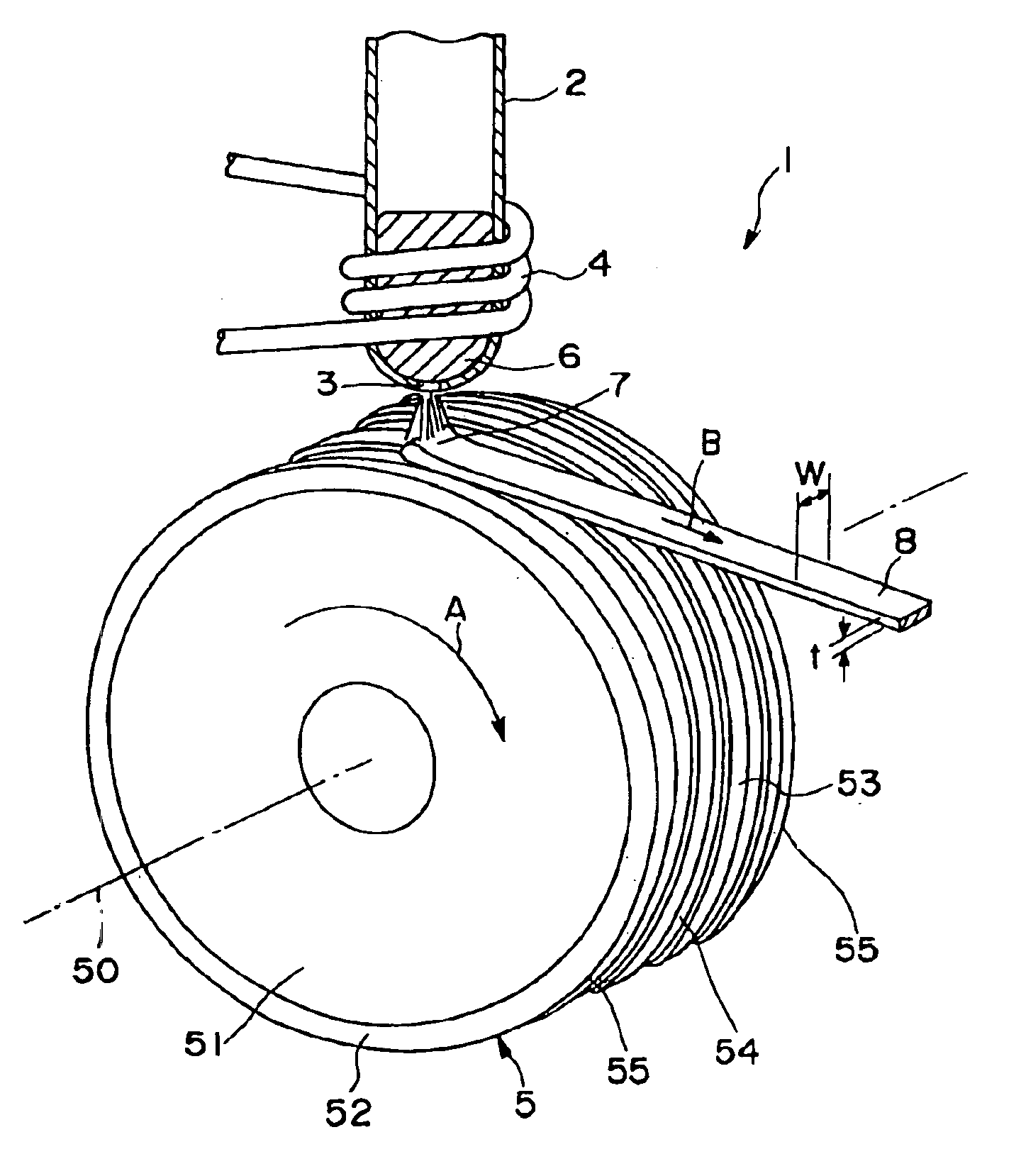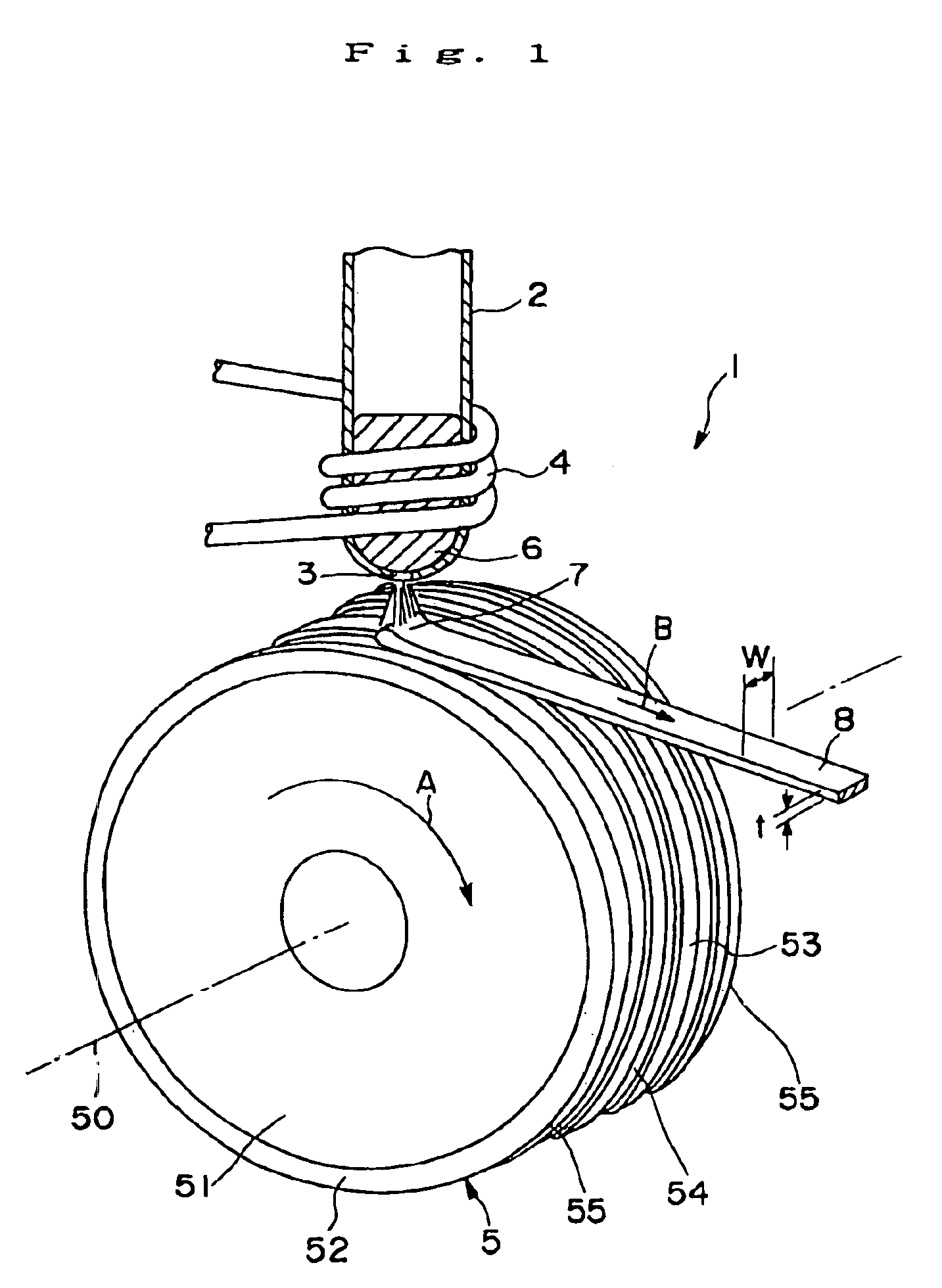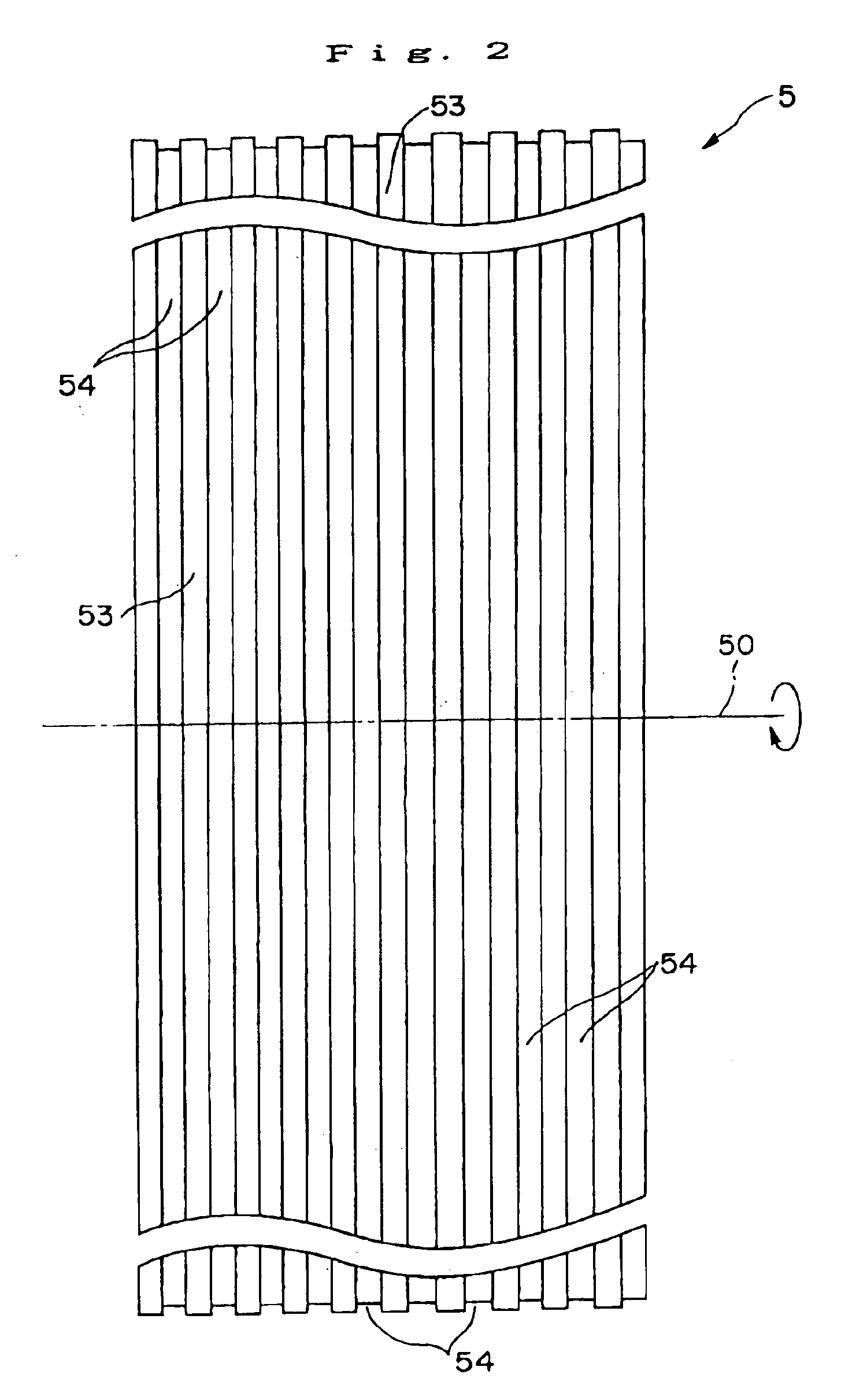Method of manufacturing magnet materials, and ribbon-shaped magnet materials, powdered magnet materials and bonded magnets
a technology of magnetic materials and ribbons, which is applied in the manufacture of magnetic materials, inductance/transformers/magnets, magnetic bodies, etc., can solve the problems of reducing magnetic properties, reducing magnetic properties, and reducing the maximum magnetic energy product (bh)max of bonded magnets, so as to achieve excellent magnetic properties, high maximum magnetic energy product, and high magnetic properties
- Summary
- Abstract
- Description
- Claims
- Application Information
AI Technical Summary
Benefits of technology
Problems solved by technology
Method used
Image
Examples
examples
[0176]Hereinafter, actual examples of the present invention will be described.
examples 1
[0177]A cooling roll A having the gas expelling means shown in FIGS. 1 to 3 was manufactured, and then a melt spinning apparatus equipped with the cooling roll A shown in FIG. 1 was prepared.
[0178]The cooling roll A was manufactured as follows.
[0179]First, a roll base (having diameter of 200 mm and width of 30 mm) made of a copper (having heat conductive of 395 W·m−1·K−1 at t a temperature of 20° C. and coefficient of thermal expansion of 16.5×10−6 K−1 at a temperature of 20° C.) was prepared, and then it was ground so as to have a mirror finishing outer circumferential surface with a surface roughness of Ra 0.07 μm.
[0180]Then, a plurality of grooves 54 which extend in parallel with the rotational direction of the roll base were formed by cutting.
[0181]Next, a surface layer of ZrC (a kind of ceramics) (having heat conductive of 20.6 W·m−1·K−1 at t a temperature of 20° C. and coefficient of thermal expansion of 7.0×10−6 K−1 at a temperature of 20° C.) was formed onto the outer circum...
example 2
[0209]Ten melt spun ribbons (sample Nos. 2a, 2b, 2c, 2d, 2e, 2f, 2g, 2h, 2i and 2j) were manufactured using the cooling rolls A to J in the same manner as Example 1 described above excepting that the alloy composition of each melt spun ribbon was Nd11.5Febal.B4.6.
[0210]For each of the samples Nos. 2a to 2j, the magnetic properties of the melt spun ribbon was measured in the same manner as Example 1.
[0211]Then, each of the melt spun ribbons was subjected to a heat treatment in an argon gas atmosphere at a temperature of 675° C. for 300 sec.
[0212]Then, each of the melt spun ribbons which were subjected to the heat treatment was milled to obtain magnetic powder having a mean particle size of 70 μm.
[0213]To analyze the phase structure of the obtained magnetic powders, the respective magnetic powder was subjected to an X-ray diffraction test using Cu—Kα line at the diffraction angle (2θ) of 20°-60°. As a result, in each of the magnetic powders, the obtained diffraction pattern shows only...
PUM
| Property | Measurement | Unit |
|---|---|---|
| Length | aaaaa | aaaaa |
| Thickness | aaaaa | aaaaa |
| Angle | aaaaa | aaaaa |
Abstract
Description
Claims
Application Information
 Login to View More
Login to View More - R&D
- Intellectual Property
- Life Sciences
- Materials
- Tech Scout
- Unparalleled Data Quality
- Higher Quality Content
- 60% Fewer Hallucinations
Browse by: Latest US Patents, China's latest patents, Technical Efficacy Thesaurus, Application Domain, Technology Topic, Popular Technical Reports.
© 2025 PatSnap. All rights reserved.Legal|Privacy policy|Modern Slavery Act Transparency Statement|Sitemap|About US| Contact US: help@patsnap.com



